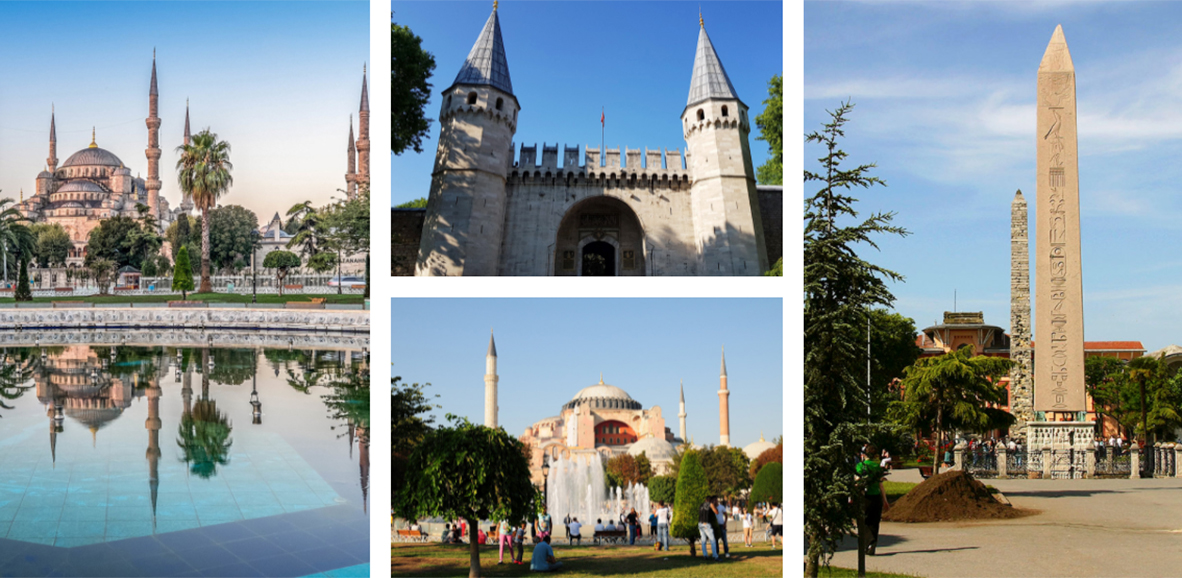The Süleymaniye Mosque was built between 1550 and 1557 according to plans drawn up by imperial architect Mimar Sinan and funded by Sultan Süleyman.
The Süleymaniye Mosque was extensively damaged during two calamities: the 1660 Great Fire and the 1766 earthquake. Sultan Mehmed IV ordered its repair, but part of its ceiling came tumbling down in a later disaster, destroying Sinan’s original work. During World War I, the courtyard was used as a weapons storehouse, and when some of the munitions exploded, the mosque caught fire again. It wasn’t fully rebuilt until 1956.
The mosque is a single area of 59 m by 58 m, with a dome flanked on either side by semi-domes. The northern and southern arches are supported by enormous monoliths of porphyry stone, which feature tympana decorated with colorful glass. Buttresses were built into the design of the building to connect them to the walls. After connecting them to the walls, the architect Sinan incorporated the interior half of these buttresses into the inside wall, then disguised their presence by constructing two-story colonnaded galleries both inside and outside around them.
The interior decoration is basic, with only stained-glass windows used on the qibla wall. The mihrab is encircled by Iznik tile revetments. On a blank white background, these repeating rectangular tiles have a stenciled floral pattern printed on them. Flowers are primarily blue, with turquoise, crimson, and black but no green is used. Calligraphic verses from surah Al-Fatiha in the Quran are etched onto large tiles on either side of the mihrab.
The mihrab and mimbar are simple designs, constructed of marble and white mother-of-pearl. Woodwork is also kept to a minimum with only delicate motifs on ivory and mother of pearl.
The Süleymaniye Mosque, like the other imperial mosques in Istanbul, was built as a kulliye, or complex with associated buildings to serve both religious and cultural needs. The original complex included a mosque, hospital (darussifa), elementary school, public baths (hamam), caravanserai, four Qur’an schools (medrese), specialized school for hadith learning, medical college, and public kitchen that provided meals to the needy.
A few of these buildings are still in use, and the former imaret is now a renowned restaurant. The Turkish Army currently owns the printing facility where the former hospital is located.



Comment (0)